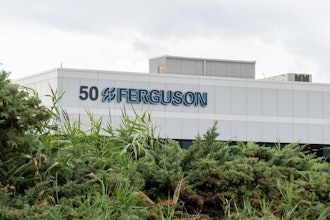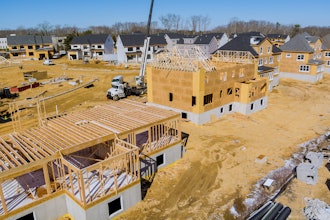WASHINGTON (AP) — New evidence of a slowing economic rebound emerged Thursday in reports that manufacturing activity is slowing after helping drive the early stages of the recovery.
Factory output fell in June, according to a government report on industrial production. It was the sharpest monthly drop in a year. And two regional manufacturing indexes sank this month.
Production of automobiles, home-building materials and processed food all fell in June. The data sent stocks falling.
Federal Reserve officials took note of the weakening recovery when they met last month and lowered their forecast for economic growth, according to minutes released Wednesday.
Manufacturing helped boost the economy last year when the recession ended and has since been one of the strongest sectors in the recovery. June's decline in output was the first in four months. Overall industrial production ticked up for the month, but that was mainly the result of hot weather that increased demand for electricity from utilities.
"Today's report supports the view that the manufacturing recovery lost some momentum," said Peter Newland of Barclays Capital Research.
The decline in factory output came as new data offered a mixed picture of the recovery. Applications for unemployment benefits fell to 429,000, the lowest level since August 2008, the Labor Department said Thursday. But much of that was the result of seasonal factors. General Motors and other manufacturers skipped their usual summer shutdowns.
Separately, the Labor Department said wholesale prices fell for a third straight month. Prices were pulled down by a drop in energy costs and the biggest plunge in food costs in eight years. But excluding those two volatile commodities, inflation was nearly flat.
The Federal Reserve report on industrial production showed that overall output at the nation's factories, mines and utilities rose 0.1 percent in June. It was the fourth straight monthly gain. But factory output — the largest component of industrial production — dropped 0.4 percent.
Adding to concerns in the manufacturing sector were steep drops reported Thursday in the Empire State and Philadelphia Fed Manufacturing indexes.
Economists viewed the reduction in factory output as further evidence that the economy is weakening as it enters the second half of this year.
"It is pretty clear that a slowdown is in process," said Brian Bethune, chief U.S. financial economist for IHS Global Insight. "The healing process from a severe recession is still under way, but given the kind of trauma the economy was subjected to, it isn't going to bounce back on a sustained basis right away."
Bethune said the slowdown in factory production is following similar patterns in the recoveries from recessions in the early 1980s, 1990s and in 2001. The economy gets an initial boost as businesses switch from liquidating inventories to restocking. But the strength from that initial spurt wanes and leads to slower growth.
This week, the government reported that retail sales fell for the second straight month. Declining consumer spending keeps businesses from restocking their shelves. That slows factory production and overall economic growth.
Bethune said the overall economy, as measured by the gross domestic product, probably grew at an annual rate above 3 percent in the April-June quarter. But he thinks it will slow to growth of just 2.5 percent in the second half of this year.
Consumers are likely to hold back on spending until the employment picture improves.
The latest data on jobless claims looked promising on the surface, as initial claims fell by 29,000. But much of that was the result of temporary seasonal factors. A Labor Department analyst said manufacturing companies reported fewer temporary layoffs than usual this time of year. General Motors said last month that it would forgo its customary two-week summer factory closings, which it uses to retool plants for new car models.
That usually causes a spike in temporary layoffs and jobless claims in early July. Other manufacturers also reported fewer temporary layoffs than expected, the analyst added.
Last week's drop "is very encouraging," Jennifer Lee, an economist at BMO Capital Markets, said in a note to clients. "But it likely won't last" because much of it was due to seasonal factors.
Claims had been stuck above 450,000 all year, after dropping steadily last year from a peak of 651,000 in March 2009. In a healthy economic recovery with rapid hiring, claims usually fall below 400,000.
Before seasonal adjustment, the number of jobless claims rose last week. But since they didn't rise as much as they usually do this time of year, the seasonally adjusted number fell.
The seasonal-adjustment process is intended to cancel out the impact of recurring events that don't reflect the health of the economy. These include layoffs of temporary retail employees after the winter holidays.


















